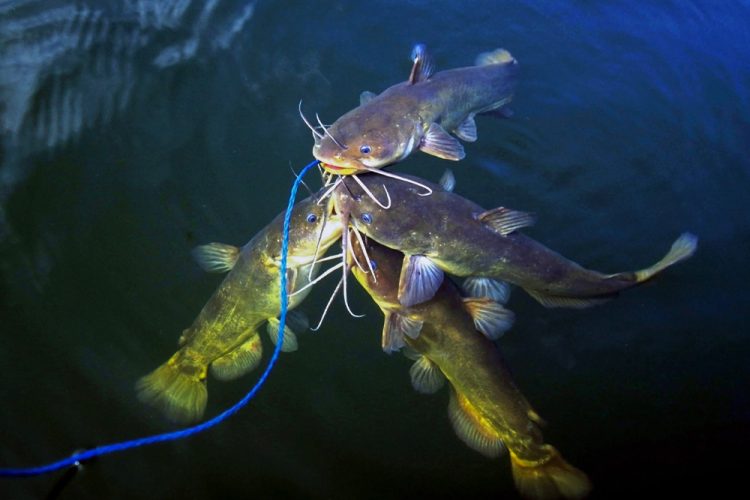Keeping your catch alive or on ice until you’re ready to clean it
provides more flavorful fillets, steaks or nuggets for the dinner table.
Handling and Keeping Small Catfish for the Table
By Keith “Catfish” Sutton
Before you ever make a cast, it’s worth deciding whether you plan to eat any of the catfish you catch. If you do, a little preparation ahead of time will pay off in fresher fillets and fewer headaches when you get home.
Know the Rules First
Every state has its own regulations about keeping fish. Some waters are catch-and-release only. Others may have length limits or daily creel limits to prevent overharvest. Because most anglers targeting small cats (those good eaters under 10 pounds) want to put a few in the fryer, it’s smart to check the rules before you go. Your state’s fisheries department website will tell you exactly what’s legal. Staying informed keeps you on the right side of the law.
Ice and Storage Options
If your plan is to bring home a couple of smaller catfish for dinner, a soft-sided cooler bag with ice packs will do the job. Add a few plastic bags so you can wrap fish before icing them down.
For bigger hauls or if you want fish for the freezer, a hard ice chest is a better option. Fill it with loose ice, reusable packs or frozen soda bottles. Two-liter bottles fit big coolers while smaller bottles can be tucked into tight spaces.
Dispatching Fish Humanely
A freshly caught catfish can thrash and stress if you just drop it in a cooler. One option is using a simple tool called a “priest” or fish bat—a short heavy stick designed to deliver a quick blow to the head. A small hammer or wooden handle can work in a pinch. Hold the cat firmly and strike just above the eyes until it stops moving. Doing this quickly is both humane and practical since the meat will keep better once the fish is stilled and iced.
Keeping Fish Alive on the Water
In cool conditions, many anglers prefer to keep small cats alive until heading home. If you’re fishing in a boat, you may be able to put the fish in a livewell until you’ve finished fishing. Otherwise, a rope or chain stringer works fine for fish in the one- to five-pound range. For anything bigger, check that your gear is strong enough to hold without bending or breaking.
With rope stringers, run the point through the soft tissue just behind the lower jaw and out beside the tongue—not through the gills which will kill the fish. Chain stringers use safety-pin-style clips that can secure each fish individually.
Floating wire baskets are another option. Just tie them securely to a dock, stump or the bank, lower them in and drop fish through the spring-loaded lid. In all cases “cool” is the keyword. If the water feels warm enough that you’d swim in it comfortably, it’s probably too hot to keep catfish alive for long.
Final Thoughts
Small catfish—those under 10 pounds—are perfect for the skillet or the fryer. By following the rules, packing smart and handling your catch properly on the water, you’ll end up with fillets, steaks or nuggets that are fresh, clean and ready to cook. A little planning before you leave home makes all the difference once the oil’s hot.
(CatfishNOW editor Keith Sutton has been an avid catfish angler for almost 60 years. His magazine articles and books about catfishing have helped millions of people catch more fish.)



